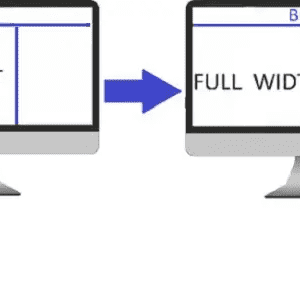Understanding why diesel engine cars tend to shake when turning off the engine requires a deep dive into the complexities of the engine’s mechanics, including its ignition process and compression ratio, as well as the shutdown process.
It’s not a simple case of ‘on’ and ‘off’; there are many moving parts involved that directly impact the stability of the vehicle.
By delving into the specifics of these aspects, this exploration shines a light on the particularities of diesel engines and why they behave the way they do upon shutdown.
Moreover, the comparison between diesel and gasoline engines offers a broader context and magnifies the distinctiveness of diesel engine vibrations.
Lastly, a consideration of how advanced technology is shaping and refining engine design and functionality underlines the strides made towards mitigating the shakedown in diesel engines during shutdown.
Table of Contents
Mechanics of a Diesel Engine
The Intricate Mechanics of Diesel Engine Shutdown: A Deep Dive
Talk about a fascinating topic! Diesel engines, widely celebrated for their robustness and fuel-efficiency, are among the most potent and enduring creations of human engineering. However, to appreciate this power, we need to delve into the intricate mechanisms of operation, particularly relating to shutdown behavior.
What makes diesel engines so intriguing, especially when discussing their shutdown process, are their unique mechanical characteristics. Unlike their petrol counterparts, diesel engines utilize pressure over spark plugs to ignite fuel, which plays a pivotal role in their shutdown process.
The Diesel Engine Shutdown Process
At the core of the shutdown behavior in diesel engines is a specially-designed component: the fuel shutdown solenoid.
This ingenious invention is responsible for cutting off the fuel flow, thus initiating the shutdown process.
Here’s how it works:
The fuel shutdown solenoid is connected to the engine’s ignition switch. When the ignition switch is turned to the ‘off’ position, it activates the solenoid which moves to obstruct the fuel line, cutting off the fuel flow to the engine. This results in the engine coming to a gradual halt due to lack of fuel, ensuring the safety of the overall system.
Mechanical Implication
But what happens if there are any mechanical hiccups? It’s worth noting that any malfunctions in the shutdown solenoid – be it electrical failure, mechanical wear and tear, or even a sticky solenoid – could result in issues with the engine shutdown.
Variable Valve Timings: A Vital Element
In modern diesel engines, variable valve timing plays a significant role in engine shutdown. It can adjust the opening and closing times of the intake and exhaust valves according to the engine’s speed and load.
This advanced control makes diesel engines more flexible in various operating conditions, contributing directly to controlled shutdowns.
Importance of Engine Temperature
Lastly, it’s crucial to acknowledge the role of engine temperature in a diesel engine’s shutdown process. Since diesel engines rely on compression ignition, an excessively hot engine can lead to something called ‘run-on,’ or ‘dieseling,’ where the engine continues to run even after shutdown. It’s a safety hazard and should be addressed promptly.
By analyzing and understanding the individual components and complex interplay involved, we can gain a comprehensive perspective on how the mechanics of a diesel engine impact its shutdown behavior.

Understanding The Diesel Turn Off Process And Shaking In Detail
Diesel engines have unquestionably made a significant contribution to the field of the tech revolution. With this in mind, let’s dive deeper into what specifically occurs during the shutdown process of a diesel engine that tends to cause a shake.
Firstly, to truly understand what triggers the shake during a diesel engine shutdown, it’s critical to include a nod to the compression ignition principle.
Diesel engines function on this principle where the fuel air mixture ignites by the heat of compressed air. When the engine is turned off, this process is abruptly halted. This sudden stop often triggers a shake which is a normal response of the machinery.
In addition to the aforementioned mechanism, there’s the speed governor, an essential component that manages the quantity of fuel delivered to the injectors.
When a shutdown command is initiated, the speed governor cuts off all fuel going to the engine. This rapid, abrupt action can cause an immediate jolt, or ‘shake’, due to the swift discontinuation of engine-run fuel.
Remember the air intake and exhaust valves mentioned previously? Well, when the diesel engine dips below its operational speed during a shutdown, these valves operate erratically for a brief period.
This lack of uniform motion can easily result in a slight shake or shudder as the engine settles down.
Alignment also plays a part in the engine shutdown shake phenomenon. Shaft misalignment occurring due to wear and tear, vibration, and heat exposure during operation can lead to the engine shaking during shutdown.
Regular inspection, maintenance, and alignment can mitigate these effects.
The coolant system factors in as well. Normally, the coolant, which accounts for heat distribution in your diesel engine, continues to circulate even after shutdown.
This keeps the engine temperature even, preventing any post-shutdown issues. If, however, the cooling system has any glitches, such as an inefficient radiator or a faulty water pump, it might lead to uneven cooling, causing certain parts to contract more rapidly than others.
This uneven contraction does induce engine shake during shutdown.
It’s pretty clear that the shutdown shake in diesel engines is an amalgam of various interplaying factors, from sudden fuel cut-off, erratic operation of valves, shaft misalignment, and potential inconsistencies in cooling.
While innovations in engineering design and mechanisms are continually improving this shutdown process, understanding these reasons and maintaining good practice in care, upkeep, and running of your diesel engine will ensure a smoother and more efficient shutdown process.

Comparing Diesel and Gasoline Engines
Moving ahead from the integral topics discussed earlier, the additional distinctions between diesel and gasoline vehicle engines regarding shutdown deserve attention.
These distinctions converge in the realm of how the two engine types respectively deploy compression ignition and speed governing principles, also taking into account the functionality of air intake and exhaust valves, the implications of shaft misalignment, and the coolant system.
The compression ignition principle applies particularly to diesel engines, unlike gasoline ones, which use the spark ignition. This principle shapes the shutdown process for diesel engines.
When it’s time to shut down a diesel engine, the process mostly inhibits fuel supply instead of disabling spark provision as in the case of gasoline engines.
Therefore, an understanding of the compression ignition principle is vital to appreciate the uniqueness of the diesel engine’s shutdown process.
Next, diesel engines distinguish themselves with their speed governing system. Speed governors in diesel vehicles perform the role of managing engine speed within a set range and adjust fuel delivery to maintain the set speed.
During shutdown, the governor has to react swiftly to counterbalance any potential runaway scenarios, highlighting its crucial role in the smooth shutdown of diesel engines.
A third attribute is the clever management of air intake and exhaust valves in diesel engines. While the air and exhaust valves have similar roles in all engines – namely to allow air in and push exhaust out – diesel engines separate the roles.
The separate systems prevent unwanted, potentially dangerous firing orders which could lead to engine runaway or ineffective shutdown.
Shaft misalignment can also impact the effective shutdown of a diesel engine. Any deviation from a straight line along the rotational center can cause additional vibration, potentially leading to parts coming loose and causing catastrophic engine damage.
Therefore, ensuring correct alignment is crucial for not just smooth operation, but also secure shutdown of these engines.
Last but not least, let’s focus on the coolant system, which is incredibly important in diesel engines due to their higher operating temperatures.
Efficient coolant systems are imperative to maintain reasonable temperatures and prevent overheating, and during engine shutdown, the coolant contributes towards preventing “dieseling” or engine run-on.
The absence of an appropriate coolant system and response tactics during shutdown, can exponentially increase safety risks and component wear.
Distinguishing diesel engines from gasoline engines regarding engine shutdown involves diving deep into the fundamental characteristics and structures of diesel engines.
By focusing on these channels, we can better understand how diesel engines function and how they can be innovatively leveraged or even improved for future technology.

Role of Advanced Engine Technology
As the adage goes, “knowledge is power,” and nowhere is that exemplified more than in the constant evolution and augmentation of technology.
Capitalizing on this understanding, leading-edge technology has been employed to deal with the persistent issue of diesel engine shaking during the shutdown process.
One groundbreaking solution is telematics systems that offer real-time monitoring of engine performance. Coupled with predictive analytics, these platforms identify abnormalities in the operation of the engine, such as imbalances and irregular vibrations, which could lead to shaking during the shutdown process.
They alert operators and allow for proactive maintenance, thus averting potential harm and promoting engine longevity.
Moreover, enhancements in fuel injection systems have been pivotal in addressing shutdown shake issues in diesel engines.
These advanced systems are capable of administering optimal fuel delivery, minimizing the engine load variations that could trigger vibrations during shutdown. Precision-engineered injectors also foster fine atomization, leading to more efficient combustion that inhibits shaking.
Further, software-assisted speed control mechanisms play a key role in mitigating shutdown jitters. As the engine deaccelerates to its at-rest state, the software minutely adjusts the fuel pulse width and controls the fuel cut-off to the cylinders sequentially, promoting a smoother shutdown.
In addition to the advancements above, the use of laser alignment tools ensures the accurate alignment of the shaft and other moving parts—substantially reducing the risk of shaking during shutdown.
Laser technology is quick, precise, and allows engineers to attain exact alignment, promoting optimal engine performance and reducing wear on engine parts.
Lastly, breakthrough technology in coolant systems also contributes to the resolution of the shutdown shake problem. Portable, highly sensitive thermal cameras can scan the engine, detecting uneven temperature distribution.
Spotting hot spots or temperature spikes in the coolant flow helps identify potential circulation issues or component failures that could result in engine shake during shutdown.
To sum it up, addressing the shutdown shake issue in diesel engines is no small endeavor—it combines sophisticated technologies with profound understanding and craftsmanship.
All these innovations do not just solve problems—they contribute to the continuous enhancement, sustainability, and possibilities of diesel engine technology.
The future looks more efficient, more sustainable, and exceedingly bright for diesel engines and the billions of people who rely on them. After all, isn’t that what technology strives to achieve?
So, gear up for a future where diesel engines function smoothly, from start to shutdown.

Expertise in understanding the diesel engine’s shutdown complexities and the associated tremors can be deepened by a thorough understanding of its mechanics and the shutdown process itself.
When contrasted with gasoline engines, the apparent singularity of tremors in diesel engines becomes more evident.
Furthermore, it’s hopeful to observe how emerging technologies are consistently evolving and introducing new solutions to diminish the perceived shakedown during diesel engine shutdowns.
Therefore, by gaining a robust grasp of these mechanics, individuals can become more knowledgeable and proactive diesel vehicle owners, taking full advantage of engineering innovations to ensure a smoother, more efficient, and superior driving experience.






